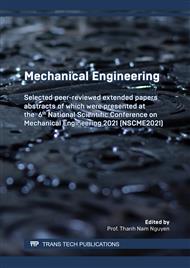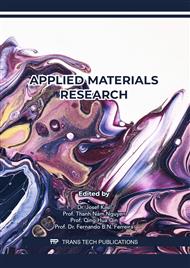p.31
p.37
p.47
p.55
p.65
p.75
p.87
p.93
p.99
Design and Manufacturing of Feeding System to Improve Accuracy and Surface Roughness of FDM Products
Abstract:
Fused Deposition Modeling, a great potential technology, has been increasingly applied in various industries as rapid prototyping for testing, casting prototyping and final products manufacturing. This widely usage comes with high products accuracy requirements. Currently, industrial 3D printers are very high in price that open-source low cost printers are the most suitable for hobbyist and researchers in the world. Therefore, research to improve product quality for low-cost 3D printers to serve industrial demand is greatly necessary. Realizing that in FDM technology, the feeding method is one of the important issues that determine the accuracy of printed products. The problem to be studied here is to design and manufacture a filament feeding system for a low-cost 3D printer and find out an optimal set of parameters for the fabricated feeder. This paper analyzes the feeding systems for 3D printers that have been used on the market, thereby offering a design and manufacturing feeder for the low-cost 3D printer. Then, experiments with Polylactic Acid (PLA) filament will be taken to check the accuracy of printed products and figure out the optimal set of technological parameters for the 3D printing process. Thereby improving product quality and shortening printing time. Continue to research and perfect the design can help commercialize low-cost 3D printers and stimulate research as well as 3D printing in industries.
Info:
Periodical:
Pages:
65-74
Citation:
Online since:
June 2022
Authors:
Keywords:
Price:
Сopyright:
© 2022 Trans Tech Publications Ltd. All Rights Reserved
Share:
Citation:



